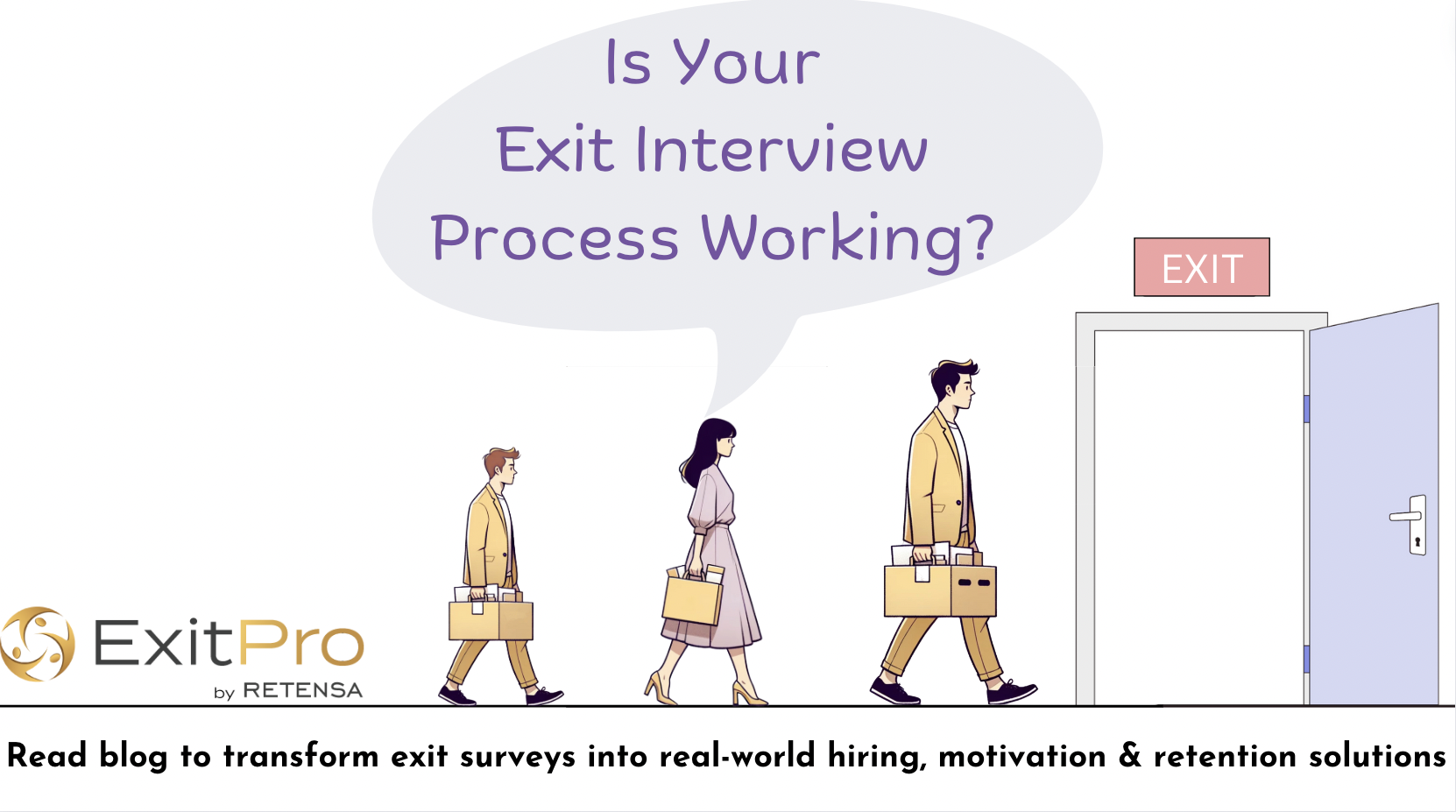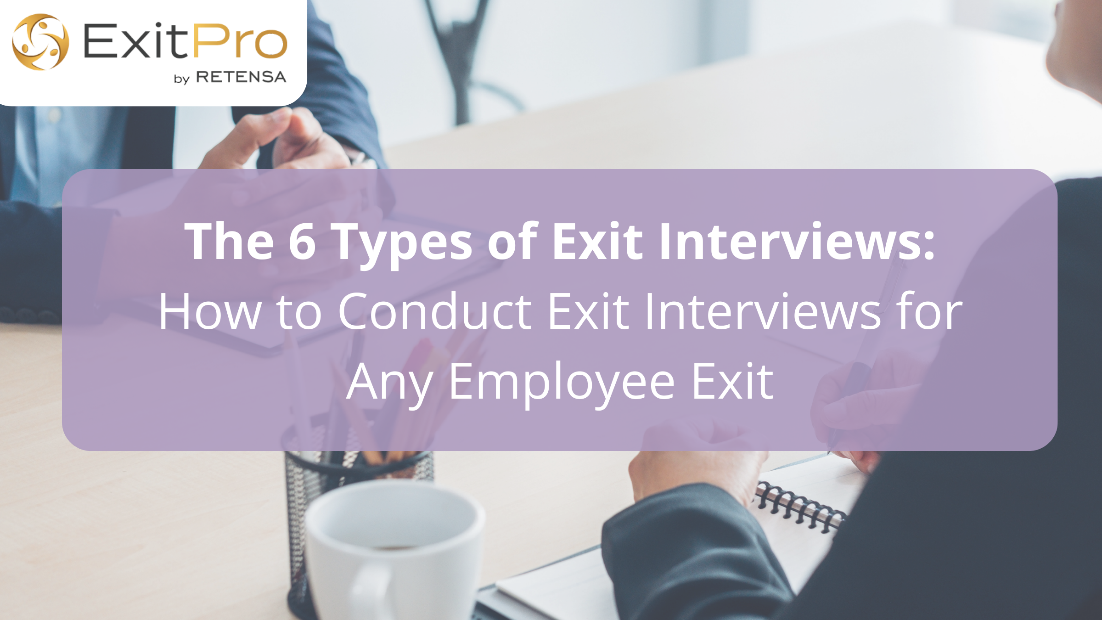Are you asking the exit interview questions that reveal actionable change?
You are not alone. Many organizations struggle to see the benefits of exit interviews, and often site versions of the same FIVE C’s:
- Completing: Exit survey responses rates are too low to reflect staff groups
- Centralizing: Different exit interview forms and different processes across different media
- Converting: Responses into clear and actionable exit interview reports
- Constructing: The business case to reduce staff turnover
- Compelling: Leadership to act on the meaningful change
Resolving these concerns is the focus of this exit interview article. Getting buy-in for change starts with knowing how much it really costs to do bad exit interviews.
The Cost of Employee Turnover
The employment landscape reached 50-year lows in unemployment, hovering under 4.0% since December of 2021. Employee retention remains a major challenge for companies across all industries.
The Job Openings and Labor Turnover Survey (JOLTS) reports that 3.0 to 4.5 million employees quit their jobs each month in the past year. According to calculations by the Society for Human Resource Management (SHRM), it costs a company 6 to 9 months of the employee’s salary to replace them (50 to 75% of total salary). This means that for an employee making $60,000 per year, your company will spend between $30,000 to $45,000 in direct and indirect costs to replace just one person.
Almost every study in the last 20 years, the lowest cost of replacing a single non-college degree employee is 20% to 25% of their annual salary. With an education, job skills, and fewer applicants to replace them that cost balloons to 200% of salary. HR teams are compelled to find ways to leverage data to predict and prevent turnover. For exit interview programs that improve employee retention rates exit interview process gathers the right feedback in order to learn what we need to know to prioritize the best solutions.
Let’s look at why exit interviews are so valuable to reduce turnover and the costs associated with it.

Replacing Employees in a Tight Labor Market
The cost of replacing employees is often hidden but can be significant, including lower morale, decreased productivity, training costs, cultural impacts, recruitment cost, and onboarding costs. Finding the right talent to replace experts within a company can also be a long and challenging process.
The reality is that employers can reduce turnover by providing employees with a workplace where they don’t want to leave. What employees want and why they quit varies by industry, geography, and employee demographics. However, there are some universal themes. LinkedIn found that 94% of employees would stay with their current employer if the company invested in their long-term learning and supported career growth.
The best exit interview programs do this in the exit interview process:
- Ask employees what they liked: Do not overlook the single most significant influencer to giving employees what they want…making sure you know what they want! People that quit are a lot like people who stay. So, we apply this insight to increase the retention of the staff that remains.
- Confirm the benefits that increased their quality of life and reduced stress…is it really healthcare, gym memberships, and financial wellness plans? Or something else better and cheaper?
- Determine how company culture attracts or repels low performers versus high performers. If low performers don’t like working here…then our company culture is working.
- Reveal communication tools or feedback models that helped your employees connect with decision-makers. Maybe it allowed engineers to innovate, or nurses to air their grievances, or to help maintenance feel valued and appreciated. Leverage those tools more. Replicate them across the organization.

Exit Interviews Alone Are Not Enough
Yes. Exit interviews are a valuable source of real-world feedback. However, they are only effective when we conduct questions where the answers lead to implementing changes. Most organizations only conduct exit interviews as a formality. Some have never used the answers they receive to improve orientation, onboarding, benefits, promotions, communication or culture.
According to a Harvard business review study, less than one-third of executives can give a specific example of an action they took in response to data from an exit interview!
Therefore, if we send exit interviews to employees who are leaving, we want to ensure that they are effective in helping to bring positive changes to our workplace and improve retention. So, how do we maximize the benefits of our exit interview process?
Here are five (5) powerful tactics to ensure an exit interview program will get results:
- Get Relevant Exit Interview Questions
Ask yourself whether the answers to these exit interview questions will help reveal the structural and cultural issues in your company. Look at the answers that you typically get to these questions. Do they give actionable insights that we can apply for change? Is this nice to know or need to know?
Ideally, ensuring that the questions are valid and reliable means that everyone will understand that question asked, at most education or socio-economic levels. Some of the best exit interview questions are available for download, as a good starting point.
- Customize Exit Interview Questions to Employee Rank or Role
Look through the current exit interview survey template. Do you ask the same exit interview questions to everyone leaving your company?
If you do, your exit interview reports may be less informative to real-world needs of a varied workforce.
Different ranks and responsibilities have different influences on why positions join, stay, or quit. The most common differentiators to customize exit interview questions toward includes:
- Corporate versus Field employees
- Sales versus Non-Sales people
- Office versus Production staff
- Onsite versus Remote workers
Clearly these roles have different experiences which would not show up under the exact same set of questions.
- Communicate the importance of their Exit Interview
- Consider how and when HR delivers the exit interview today. Is it communicated at all?
- Is it scheduled?
- Is there a third party to contact for the exit interview?
- Are exit interviews completed before or after the last day worked?
To achieve higher completion rates, and more thorough open-ended responses, let employees know in advance about the exit interview. If in person, on the phone, or web-based, provide details so they can prepare. An employee who gets a live voice call from an exit interview company unprepared is less likely to complete it and provides less information when they do.
- Meet them in their Medium
- How do you conduct exit interviews?
- Do you give employees paper questionnaires to fill out on the spot?
- Do you conduct one-on-one live interviews?
- Do you incorporate the exit interview with other offboarding processes?
- Do you bring the technology to the separating staff?
There is no one-size-fits all…it is about calibrating to your culture. Answering the above questions helps to determine whether we get honest exit interview answers from our workforce. One of the fastest ways to improve the process to make exit interviews more effective is to add a medium to how the employee can complete it…like QR Code, Live Voice, or SMS Text invitations.
The type of exit interview to consider depends on the size of the organization, available resources, and employee’s access to technology. Modern HR teams combine methods to conduct exit interviews through online questionnaires, sending text links to the exit survey, through a phone call by an exit interview vendor, or conducting in-person one-on-one interview.
- Code open-ended text responses to reveal hidden patterns
Most exit interview templates allow the separating employee to provide open-ended text pf their thoughts and opinion. Coding and grouping those verbatim responses reveal patterns hidden in a microculture. A good exit interview software has automated sentiment analysis features to categorize free form text and connect it to employee demographics. This allows HR leaders to examine how different sub-groups (such as location, age, tenure or genders) experience our culture differently. As we examine response patterns from different roles or departments, we identify which areas are struggling with supporting evidence for why.
The ability to analyze exit interview forms for best insights is one reason to consider outsourcing exit interviews to a third-party company. Rather than having someone inside an organization attempt to gather honest feedback, outsourcing exit interviews ensures anonymity, encouraging the interviewee to provide an independent and unbiased perspective. Most exit interview experts also have access to known best interview practices and actionable, data-driven solutions from a huge set of exit interview surveys. With exit interviews outsourced, it frees up human resource staff, allowing them to focus on the prioritized change, with more accurate insight into why employees are leaving.
Employee Retention Idea #76:
Start Employee Retention Strategies Here
Skilled employees are not getting easier to find. Knowing why employees join, why they leave, and how our organization can encourage more employees to stay is now a competitive advantage. A thoughtful exit interview strategy can reduce turnover from 5% to 10%. However, the exit strategy alone isn’t enough. It is the right questions to right people and the follow through from the feedback given that retains top talent. To accelerate an exit interview program faster, reach out to one of the best exit interview companies for turnkey exit interview software and instant exit interview reports.




